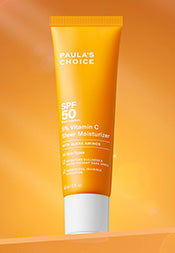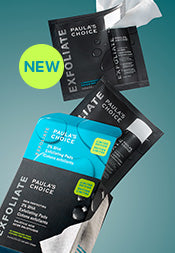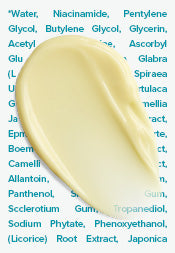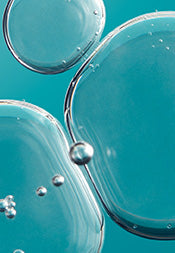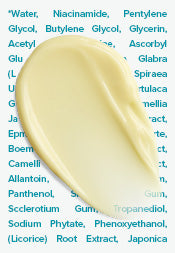How to Keep Your Neck and Chest Looking Young
Signs of aging such as crepey skin, uneven skin tone, and sagging tend to appear faster on parts of the body that haven’t been shielded from the sun. This is especially true for the neck and chest because we often neglect applying (or reapplying) sunscreen to those areas.
The question many people ask is do they need a special décolletage (chest) or neck cream to tighten the skin in those areas. The answer? Absolutely not! Read on to discover how to keep your neck and chest looking younger, firmer, and more even-toned—without needing a separate product.
Do I really need neck cream?
No; the truth is that buying a separate product for your neck or chest is unnecessary and more often than not, a waste of money. Surprisingly these products rarely contain ingredients that can help improve the signs of aging or they come in jars (which repeatedly exposes delicate antioxidants to light and air, reducestheir effectiveness), and appallingly they almost never contain sunscreen. In fact, there’s absolutely no research showing the neck or chest needs special ingredients.
Perhaps the biggest reason such creams are unnecessary is that the well-formulated products you use for your face will work beautifully on your neck and chest too. Skin anywhere on your body, especially on sun-exposed areas requires the same types of beneficial ingredients as your face — skin-replenishing ingredients, antioxidants, soothing agents, skin-restoring ingredients, and sunscreen during the day to delay the appearance of aging skin.
Board-Certified Dermatologist Dr. Corey L. Hartman notes, “However, due to the decrease in the number of oil glands on the neck and chest compared to the face, some of these active ingredients that are so beneficial can cause irritation when used on the chest and neck. For that reason, I recommend using the same products, but perhaps going slowly with the application, such as applying it 2-3 times per week”.
How to make your neck and chest look younger
Here’s what you can do that will keep your neck and chest appearing younger and healthier.
-
Use your regular anti-aging skincare products (cleansers, serums, exfoliants, and moisturisers) on your neck and chest. Only consider different products if you’re addressing unique issues like acne or extremely dry skin.
-
Always apply broad-spectrum sunscreen (SPF 30 or higher) to your neck and chest daily—especially since these areas are often exposed. Sunscreen with antioxidants not only protects from UV damage but also helps maintain a smoother, firmer appearance.
-
If you notice patches of uneven skin tone, address it with a skin-brightening product — again, it can be the same one you use on your face. You can also consider a targeted body care product with a 5% concentration of tone-evening niacinamide to tackle discolouration and signs of aging on your neck and chest.
-
Consider adding an anti-aging booster with potent ingredients like retinol, vitamin C, or peptides to your skincare routine to boost results. These are lightweight, versatile, and can be used alone or mixed with your serum or moisturiser.
Can you reverse turkey neck?
Unfortunately, the neck ages faster due to gravity, thinner skin, and fewer supporting structures. It also doesn’t help that many people neglect this area until wrinkles or sagging have already set in.
There’s a point where even the best anti-aging skincare products won’t be able to reverse advanced sagging or loss of firmness. In these cases, only medical treatments like radiofrequency microneedling, ultrasound therapy, or surgery may help
Still, there’s a lot you can do with skincare. Consistently extending your anti-aging routine to your neck and chest, using skin-restoring ingredients and daily sunscreen, can go a long way in preserving healthy, youthful-looking skin. Dr. Harman advises, “And always remember to apply sunscreen on the neck and chest every day as well”.
References for this information
Aesthetic Surgery Journal, October 2021, pages NP1603–NP1618
The Journal of Clinical and Aesthetic Dermatology, November 2020, pages 13–18
Dermatologic Therapy, May 2020, ePublication; and May 2016, Supplement 2, pages S101–S107
Skin Research and Technology, August 2013, pages 236–241


